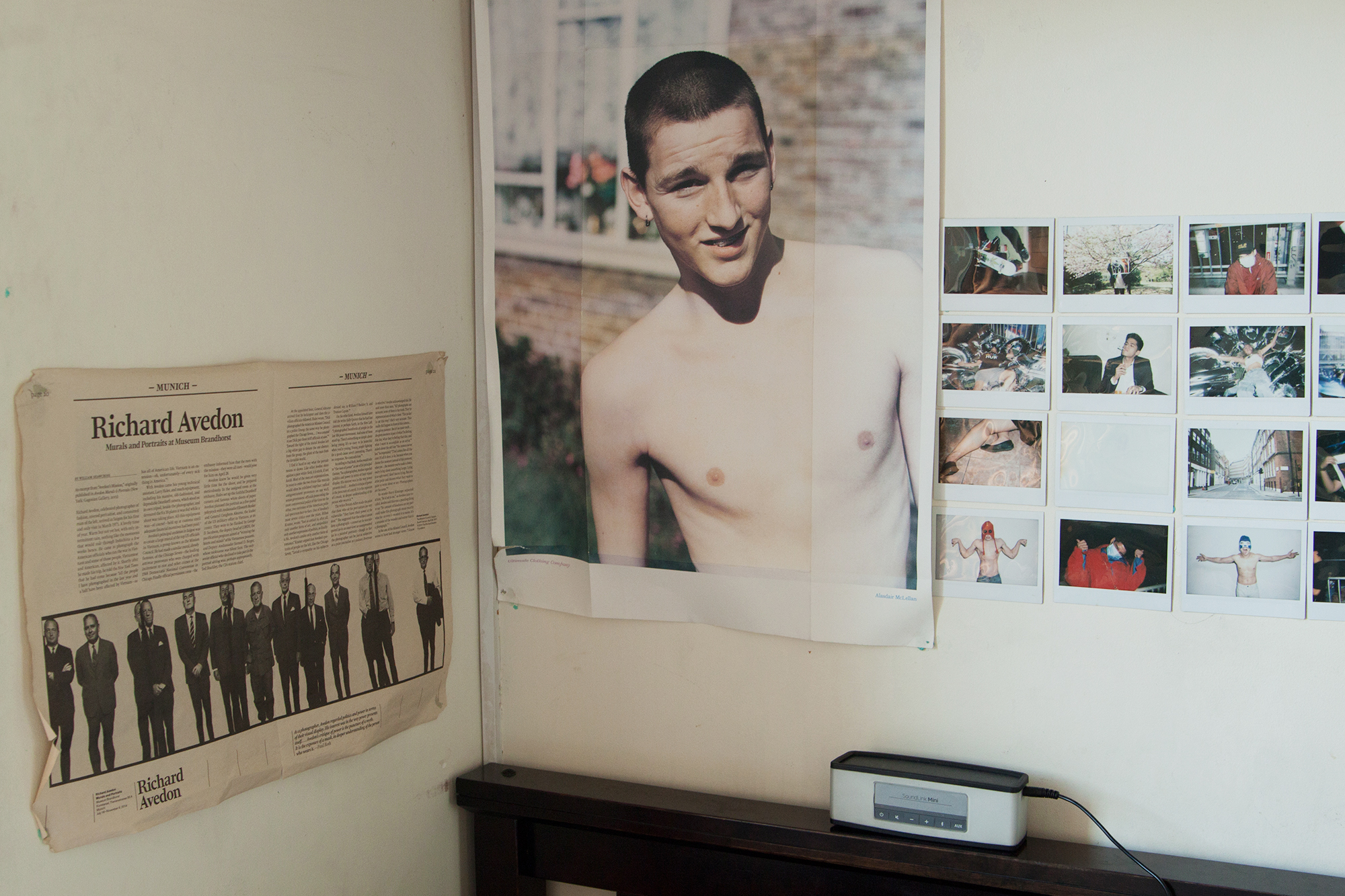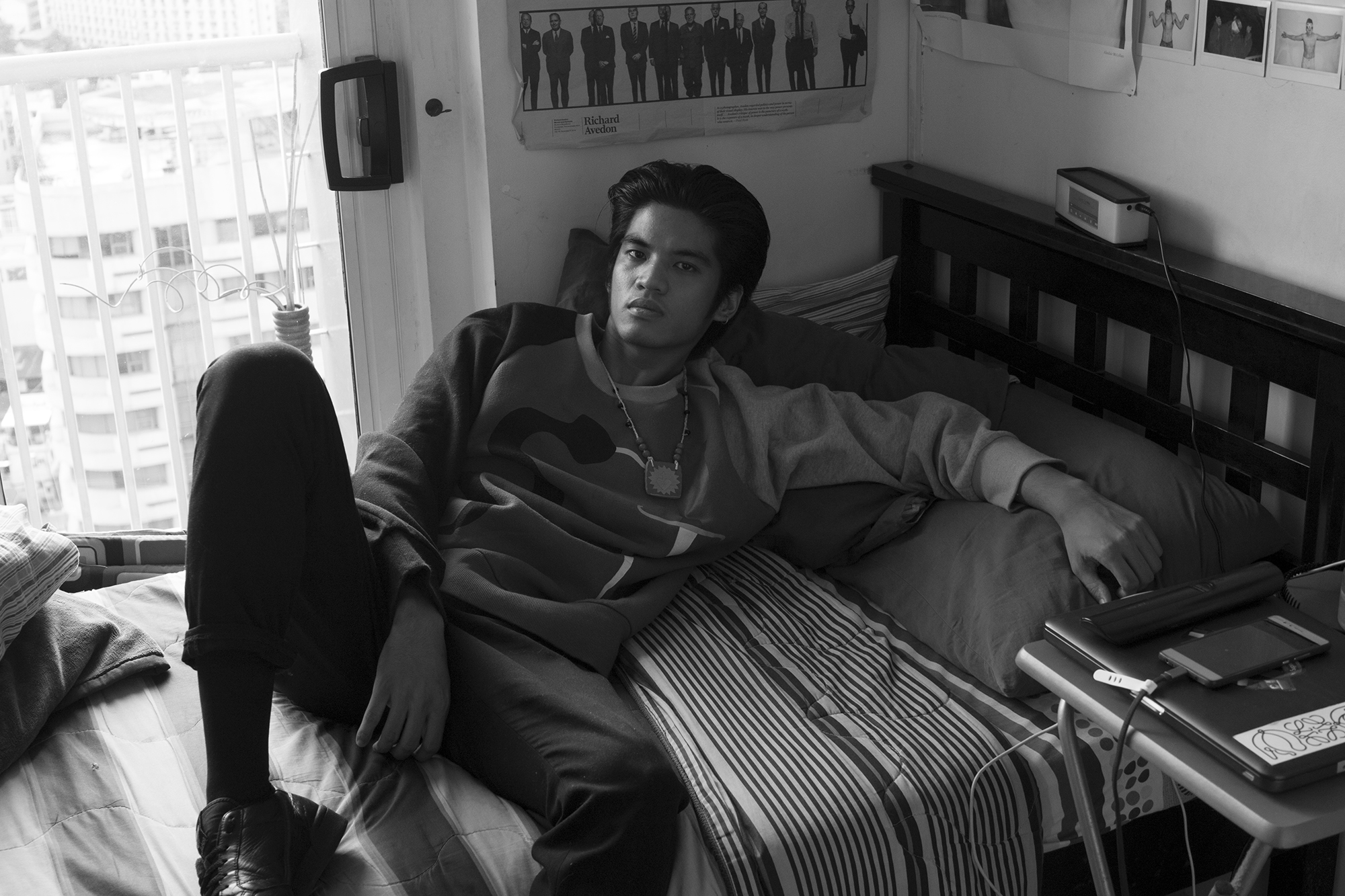Working as an artist, I have come to observe that a lot of discourse about contemporary art is linked to geopolitics, and, loosely in the broader sense, how notions of territory and space are linked to identity and the artistic impulse. While the plane of the grand narrative is important and urgent, I’m also interested in these conversations in another sense—in the much smaller scale, in private spaces, and micro pockets of creative life.
With this ongoing series, I want to explore these spaces and observe them as hubs of early ideas and raw instincts. As someone chronically curious, I’m also interested in the objects that people choose to surround themselves with, what they wear, or what they put up on walls and consider as art. Although ultimately incomplete, I think these all somehow add up to an extended portrait of who they are.

First up is my friend and collaborator, photographer Jack Alindahao. His work spans fashion, advertising, portraits, and the Manila nightlife. We first met each other at a club on 80s prom night, wearing the same thing—the same silver striped silk-satin shirt with a flamboyantly ruffled bib! What are the chances? We instantly became friends after that.
This year he’s busy. He’s working on opening his own studio and also brewing are ideas for possibly mounting a photography exhibition. Below we talk about all this, about what was and what’s next.

Part I: On photography: “You can’t just force what you want on people”
JED: You’re now working to set up your own studio. Why did you finally decide to do it and how important is having that space to your own practice?
JACK: It’s an office space that my dad used to own. It was his first office when he was starting out maybe fifteen years ago. I think it’s useful to have your own space where you have the freedom without the pressure of having to rush things, or having to pay to rent a studio. I also want it to be a space where creatives can explore their fullest potential.
JED: From when you were starting out to now, during that period, what are some of the important lessons you’ve learned about photography?
JACK: I’m sure most photographers have heard this already, that it’s not about the gear. It’s about your eye, your vision. I think that’s really true. You have the equipment but it’s more about whether the equipment is fit enough to produce the work you want to do. And what I learned is there are different ways, methods of shooting people.
I think that’s what’s important in a photographer, how you communicate with your subject, how you create the image together. It cannot be one-sided, that’s what I learned. You need to be able to connect with them emotionally and be able to be an empath, in a way. You can’t just force what you want on people. It really depends on the work. As with party, club photography, it’s a different energy. It’s being able to adapt to circumstances given to you.
I think that’s what’s important in a photographer, how you communicate with your subject, how you create the image together. It cannot be one-sided.
JED: Among the recent portrait sittings you’ve done, can you talk about one that particularly stuck with you?
JACK: Last February I had a shoot with David Medalla. I’d want to call him a national artist. He was very frail when I met him, he had difficulties talking. As a photographer you have all these ideas for how to shoot a person, but you’re only given certain situations to work with.
What stuck with me wasn’t actually the actual portrait session, but the conversation after the shoot. I asked him what’s the best advice can you give a young artist starting out? And he responded, very briefly, to always be open and do not judge. It was very impactful because, as a photographer, you’re basically an observer. You cannot impose your own judgments, it will come out in your work.
Part II: On photo books and industry greats
A Photographer’s Life 1990-2005 by Annie Leibovitz
“She does strong portraits. And she was photographer of the Stones, so I also resonate with her work, also working in the music scene. This book is more photojournalism than fashion—she has landscapes, writers, personalities, and photographs of her family. It’s a very personal book.”
Ultimate Clothing Company by Alasdair McLellan
“When I got it it was the last piece when I was at at bookstore in New Work. That was the time I just recently found out about him, this was 2015. His portraiture of men is very nice. It was also a good element of luck, because these are a limited number of copies.”
Performance by Richard Avedon
“He’s on a different level for me. Whenever I look at his work I feel like I’m still miles away from that level of photography. His work is very theatrical but very polished, and has a different kind of energy, soft but assertive. The way his subjects look at the camera, you get that certain emotion—the photographs talk to you.”
Storyteller by Tim Walker
“I got this in London when I attended his talk at the Photo Vogue Festival, where he and his team told the story of looking for a white yak in Mongolia. He also told another story of a shoot where they had a carry a sick hairstylist up a mountain just so they can move forward and do the shoot. The amount of work that goes into a picture!”
The Teen Vogue Handbook
“I saved up for that book, bought it with my own money when I was in high school. That was the time I was just starting with photography, playing with my camera. It was like a guidebook, and there were some familiar people in the book. It was very encouraging. It said stuff like, just go for it, which was what I needed at that time.”
Part III: On gear
The Canon 6D DSLR: “When I’m working in a studio and for commercial stuff, I need something I’m familiar with. If I need to work fast in digital format, that’s what I mainly use, also because of the specs.”
The Yashica Mat-124G: “It uses 120mm film. This I have to explore more, it’s the least I’ve used of all my cameras. It’s a discipline, you have limited film per roll, I can’t keep on clicking, I really have to think of the frame first. The film’s also a little expensive. They have them in Quiapo, and now you have Shopee and Lazada.”
The Lomo’Instant Wide: “I also have the Fujifilm one. It’s a very personal camera, I already have boxes of polaroids. The thing I like about the polaroids is that whenever I look at them it brings me back to the specific moment that I took it, and I remember clearly what happened, and where I was at that point in time, who I was, who my friends were. It’s a hard copy, so if I lose it it’s gone forever.”
The Ricoh GR II: “When I’m in the club I use my Ricoh GR II. It’s very compact, you can dance with it. It’s smaller than a phone, it’s very discreet. It’s a bad habit of mine, sometimes when I drive I take snapshots of the road.”
See Jack’s work on his website: https://jackmarion.photography. All photos by JED GREGORIO.
__________
MORE FROM THIS AUTHOR:
SPOTLIGHT: Meet the brothers behind Manila’s freshest streetwear startup
SYF bros Ralph and Randell Cruz model the swag and talk shop. By JED GREGORIO
_____
PROM STORY: Look ma, I won Best Dressed!
The cape, the nerves, and how OJK’s Johan Ong won Best Dressed at prom. By JED GREGORIO

